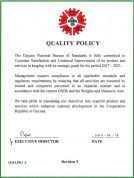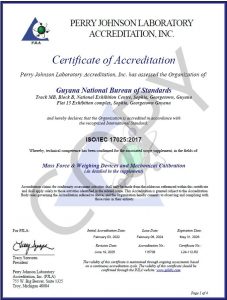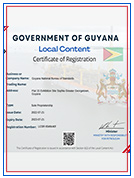The most common cancer in women worldwide, both in the developed and the developing world is breast cancer. As we observe Breast Cancer Awareness Month 2020, we are reminded of the impact of the disease on our women folk locally and across the globe. In support of testing and treatment for the disease, the International Organisation for Standardisation (ISO) has developed a crucial International Standard. The ISO 12052:2017, Health informatics – Digital imaging and communication in medicine (DICOM) including workflow and data management helps in digital imaging for the detection of the disease.
Early detection of breast cancer is one of the best methods to improve survival rate. Detection can be done by physical examination and by screening through ultrasound or mammography. A mammogram is an X-ray exam of the breasts to look for abnormalities. The results can go directly into a computer and become a digital image ready to be read and analysed by a radiologist.
According to the International Agency on Research on Cancer (IARC), in high-income countries where screening coverage is over 70%, early detection through mammography can lead to earlier treatment which in turn leads to reduction of breast cancer mortality by 20 to 30% in women over 50 years old.
The ISO 12052:2017 standard allows digital images and related information to be exchanged and managed by the many different medical imaging devices and IT systems, from many different vendors, which are in use today. Without this standard, the operation of a modern radiology department would not be possible.
As Kevin O’Donnell, one of the experts in the ISO Technical Committee that develops and maintains ISO 12052, explained: “Thanks to the standard, images can be read on any equipment. The DICOM format allows these images to be uploaded and reviewed wherever they are taken. Being able to compare current images to prior images to get a sense of changes and progression, or lack thereof, is vital for radiologists and oncologists.”
“Mammography screening is increasingly used to catch breast cancer early and the number of images that a radiologist is expected to read today would be impossible using the old film-based workflows. Digital image acquisition and review, which is enabled by ISO 12052, makes modern mammography possible”, he explained.
Similarly, the use of the standard has facilitated data handling in the many clinical trials conducted in the area of breast cancer research.
In addition, the successful exchange of information helps make patients’ lives easier. DICOM images recorded on media such as CDs, DVDs, and USB have been used for years to give patients full fidelity copies of their images.
Kevin O’Donnell underlined the important contribution of the standard to breast cancer diagnosis: “DICOM is used in most healthcare institutions worldwide where patient imaging is performed.
Every mammography system shipped today supports the ISO 12052 standard. Every image taken is either transmitted to the radiologist using a DICOM Standard protocol, or, in older clinics, sent to a printer using a DICOM Standard protocol.”
ISO 12052:2017, within the field of health informatics, addresses the exchange of digital images and information related to the production and management of those images, between both medical imaging equipment and systems concerned with the management and communication of that information. The standard facilitates interoperability of medical imaging equipment through many means including network communications, a set of protocols to be followed by devices claiming conformance to this document; and testing/validation procedure to assess an implementation’s conformance to this document.
ISO 12052:2017 has been developed with an emphasis on diagnostic medical imaging as practiced in radiology, cardiology, pathology, dentistry, ophthalmology and related disciplines, and image-based therapies such as interventional radiology, radiotherapy and surgery. However, it is also applicable to a wide range of image and non-image related information exchanged in clinical, research, veterinary, and other medical environments.
The ISO 21052:2017 can be purchased from the ISO Store, which can be accessed through the GNBS Website: www.gnbsgy.org.
For further information, contact the GNBS on telephone numbers: 219-0065 or 219-0064 or WhatsApp 692-GNBS (4627).

26
Oct





